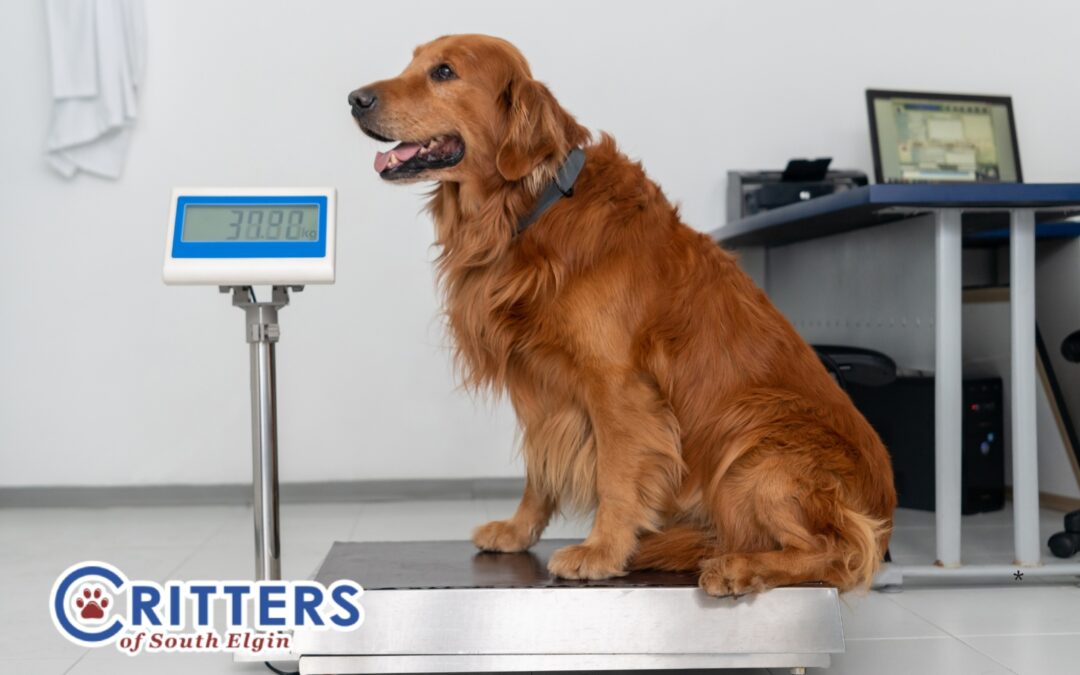Carrying extra pounds doesn’t just change how a pet looks, it can affect how they feel, move, and even how long they live. Use the quick checks below to spot early signs and start a safe, sustainable plan.
Quick At-Home Body Check
1) The “Feel the Ribs” Test
-
Run your hands flat along your pet’s sides.
-
You should feel each rib easily without pressing hard, like touching the back of your hand.
-
If you can’t feel ribs at all, there’s likely extra fat. If ribs look sharply visible, that’s too thin.
2) Check the Waistline
-
From above: there should be a visible waist, an inward curve behind the ribs.
-
From the side: look for a belly tuck (an upward slope from chest to hips).
-
A straight line or rounded belly usually means extra weight.
3) Movement & Energy
-
Tires quickly on walks, pants more than usual, or avoids stairs and jumping.
-
Cats may stop grooming their lower back or tail base because it’s hard to reach.
4) Behavior Changes
-
Less interest in play or walks.
-
Stiffness getting up, reluctance to jump, or an occasional limp (extra weight can stress joints).
Why Extra Weight Matters
Overweight pets face higher risks of:
-
Diabetes
-
Heart disease
-
Arthritis and joint pain
-
Shorter lifespan and reduced quality of life
Even a few extra pounds can push joints and organs harder than you think.
What To Do Next
1) Get a BCS From Your Vet
Ask for a Body Condition Score (BCS) on a 1–9 or 1–5 scale. Your vet will set a healthy target and a safe rate of loss (usually 1–2% of body weight per week).
2) Audit the Bowl & the Treat Jar
-
Measure every meal with a scoop or gram scale.
-
Track treats and table scraps; aim for ≤10% of daily calories from treats.
-
If family members are sneaking snacks, set a daily treat “budget” everyone can follow.
3) Adjust Portions—Gradually
-
Start by reducing total daily calories ~10% (your vet can tailor this).
-
Choose a high-quality, complete diet appropriate for life stage and activity.
-
If your pet needs fewer calories but still acts hungry, ask about higher-fiber or weight-management formulas.
4) Use Toppers—But Count Them
Freeze-dried toppers can boost flavor and nutrition for picky eaters. If you use them, keep the meal balanced:
-
A simple guide is the 80/20 approach: replace about 20% of the bowl with a complete, balanced topper (not add on top), and reduce the base food accordingly so calories don’t creep up.
-
Always check the label; not all toppers are “complete and balanced.” When in doubt, ask your vet.
5) Move More—Make It Fun
-
Dogs: add a 10–15-minute sniff walk or two short play bursts (fetch, tug) daily.
-
Cats: schedule two 5-minute wand-toy sessions and introduce a puzzle feeder to turn meals into activity.
-
Aim for small, consistent changes rather than a single long weekend workout.
6) Track Progress
-
Weigh weekly on the same scale and time of day.
-
For cats, weigh yourself, then weigh yourself holding the cat; subtract the difference.
-
Snap monthly photos (side and top views) to see shape changes you might miss daily.
When To Call the Vet Sooner
-
Sudden weight gain or loss
-
Labored breathing, constant coughing, or heat intolerance
-
Pain, persistent limping, vomiting, or notable changes in thirst/urination
These could signal medical issues that need attention before starting a weight-loss plan.
The Bottom Line
A healthy weight protects joints, supports the heart, and helps pets feel playful again. Start with the rib test and waist check, tighten up portions, build in a little daily movement, and partner with your veterinarian for a plan you can maintain.
If you’d like help choosing food, measuring portions, or picking enrichment toys, stop by Critters Pet Shop, we’re happy to set you up with a simple, sustainable routine. 🐾

